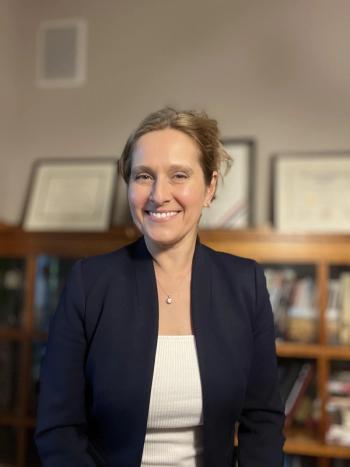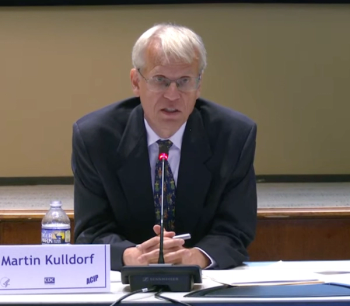
- January 25, 2020 edition
- Volume 97
- Issue 2
Battling obesity: What doctors need to know
Tips for understanding and treating one of the nation's most prevalent diseases
Ada Stewart, MD, FAAFP, has a lot of experience dealing with obesity and its effects on patients. About 75 percent of the patients she treats at the Columbia, South Carolina, Federally Qualified Health Center where she works are overweight or obese. Most also have at least one comorbidity, such as diabetes or hypertension.
Moreover, as a fellow of the Academy of Family Physicians, Stewart knows that many other family practitioners face similar situations in their practices. “It [patient weight loss] is a struggle doctors deal with every day, especially in family medicine, because we are on the front lines of helping our patients live healthy lives,” she says.
For the last 40 years or so, obesity has been one of the nation’s most pervasive, and costly, public health challenges. And despite ongoing efforts to combat it, such as the AMA’s 2013 official recognition of obesity as a disease, the problem continues to worsen. A 2018 study published in JAMA found that the percentage of obese adults age 20 and over (defined as those with a BMI of 30 or more) increased from 33.7 percent in 2007-2008 to 39.6 percent in 2015-2016.
Obesity’s cost: human and financial
During the same period, the percentage of adults with severe obesity (a BMI of 40 or more) increased from 5.7 percent to 7.7 percent. Even more worrisome, between 1986 and 2006, nearly one in five deaths among adults age 40 to 85 were tied to overweight and obesity, according to a 2013 study in the American Journal of Public Health.
In addition to its human toll, obesity imposes a substantial and growing cost on the nation’s healthcare system. A 2018 study in Clinical Chemistry found that the share of healthcare expenditures devoted to treating obesity-related illness in adults rose from 6.1 percent in 2001 to 7.9 percent in 2015.
The study also found that from 2010 to 2015, obesity accounted for 13 percent of all spending on prescription medications, compared with 6.9 percent on ambulatory care and 7.4 percent on inpatient hospital care.
Obstacles to treatment
That obesity remains a major health problem is a testament to the obstacles both physicians and patients face in treating it. Many primary care doctors find it difficult simply to carve out the extended time needed for obesity counseling from schedules that often are built around 20-minute appointments. In addition, some PCPs are reluctant to discuss weight issues with patients or diagnose obesity. (See sidebar).
For patients, losing weight entails changes in lifestyle and attitude that many find challenging even to begin, much less sustain.
“To lose weight, and more importantly keep it off, requires a combination of changing the types of food you eat and increasing your level of physical activity,” says Douglas DeLong, MD, an internist in Cooperstown, N.Y. and chair of the American College of Physicians Board of Regents. “Those two things go hand in hand, and doing them together is really hard.”
For many, it also means overcoming feelings of guilt and shame, says Lydia Alexander, MD, an obesity specialist with the Kaiser Permanente Weight Management Group in San Francisco and a board member of the Obesity Management Association.
“A big problem I see is patients feeling depressed because they think they have caused their condition because they have no willpower,” she says. “I remind them that 70 percent of the country is either overweight or obese and if this were an easy problem to fix, we would have taken care of it by now.
“We wouldn’t tell a patient who’s clinically depressed they should get out in the sun more and try to be happier,” she adds. “There’s more to it than that.”
Getting started
Faced with these challenges, how can doctors help patients achieve a healthy weight level? A good place to start, experts say, is with a physical examination to determine the patient’s BMI, followed by a discussion of other issues that might be affecting their weight, says Tiffany Lowe-Payne, DO, a family practitioner and board-certified obesity specialist in Raleigh, N.C.
“I talk with them about things like the medications they’re taking, whatever chronic conditions they may have, and family history,” she says. “We know, for example, that if both parents are overweight, it increases the chances of overweight in their children by 80 percent. So it does no good just to look at their weight or BMI, give them a diet plan and send them on their way.”
DeLong says that when a patient’s BMI meets the definition of obesity, “I ask them whether they want to talk about it. Some may not want to, but they have other health issues like diabetes or osteoarthritis that make it critical that we do discuss their obesity. So it comes up pretty frequently.”
Motivational interviewing
When counseling for weight loss, doctors who’ve done it advise using motivational interviewing: asking the patient to articulate their reasons for wanting to lose weight, and to commit to specific goals.
“Patients need to understand that making a major lifestyle change like weight loss requires a shift in their mindset,” says Lowe-Payne. “So using motivational interviewing, I will ask them to assess their level of readiness and their commitment to doing whatever it takes to create the change that they are seeking.”
DeLong will often start conversations by asking patients how they define weight loss. “Are they talking about losing 10 percent of their body weight, does it mean trying to get to a specific BMI, or something else entirely? I need to explore those questions with the patient before we can decide how best to proceed.”
Following that, DeLong asks patients about their dietary habits and daily routines, such as what they typically eat for their daily meals, the types of activities they engage in and how often, and how much sleep they get.
Based on that information, he and the patient jointly decide on goals for reducing caloric intake and increasing activity. “I might start by suggesting they shoot for cutting out 500 calories a day, which is a couple of cookies. For most people that’s pretty doable,” he says. “Then I’ll say, ‘I’m going to see you back in two months and I’d like you to lose four pounds in that time.’ Most people can wrap their heads around that.”
DeLong emphasizes the importance of setting goals that are realistic, modest, and based on each patient’s individual circumstances. “I don’t want them getting discouraged if they haven’t lost 20 pounds,” he says. “But I also don’t want them coming back having lost 20 pounds because I know they won’t be able to keep that up and the next time I see them they’ll be 30 pounds heavier.”
The time challenge
DeLong acknowledges that finding time for weight management counseling in a schedule built around 20-minute appointments is a challenge, one that requires setting priorities. For example, he says, if a patient who’s come in for a routine physical expresses concern about their weight, he may make that the entire focus of the appointment and leave only a few minutes at the end for discussing any other issues.
The time challenge is made somewhat easier by knowing that he’ll probably see the patient frequently for at least several months. “You need to see these patients repeatedly because they usually require a lot of support to prevent backsliding,” he says.
Alexander uses a similar approach to time management. “I think it’s important to take the long view, and kind of sub-divide weight management plans into smaller periods of time,” she says. “So maybe the first appointment would be just broaching the topic and letting the patient know you’re available to help.”
Subsequent visits, she adds, might consist of showing the patient how to keep a food journal or explaining the link between obesity and other common chronic conditions. “Taking this bite-size approach works to the patient’s advantage by making it easier to absorb the information over time.”
“Meeting patients where they are”
Alexander and others who’ve counseled patients for obesity emphasize the importance of “meeting patients where they are,” i.e. understanding and working within the constraints of each patient’s circumstances. For example, she’ll help patients who travel frequently for business to develop strategies for limiting their calorie consumption when eating in restaurants and/or in social situations.
“I try to teach them how to plan ahead so they’re in control of the situation, rather than the situation being in control of them,” she explains.
For Stewart, the challenge is working with low-income patients living in areas with limited access to healthy foods. “I’m not going to tell a patient who gets their food at a Dollar General store to make sure they have fresh fruits and vegetables,” she says. Instead, she advises those patients to buy foods with the lowest fat and sodium content they can find.
“You have to make things simple, and make sure patients really understand the goal and why it’s important that they try to reach it,” she adds. “If I tell a patient, ‘losing 10 percent of your weight makes your risk of diabetes or hypertension much lower,’ that’s something everyone understands.”
Don’t forget about exercise
The same principle of “meeting patients where they are” applies to the other side of the weight-loss equation: increasing physical activity. For example, for patients who find walking difficult, Alexander may recommend aquatic exercise.
“Most people aren’t going to take up jogging, but maybe they can be encouraged to try something else,” says DeLong. “It can even be something as simple as walking the dog twice a day instead of once. Anything helps.”
On the other hand, patients should be cautioned not to view exercise by itself as the solution to weight loss, since “we can always out-eat our exercise,” says Lowe-Payne. Its value lies instead in helping to remain at a healthy weight once it’s been attained. “The individuals who’ve maintained weight loss over a long period of time are making exercise or physical activity a part of their daily routine,” she says.
As for doctors, Lowe-Payne adds, they need to remember that overcoming obesity is a long and difficult process, and patients need their advice and support to accomplish it. “Most individuals don’t choose to live at an unhealthy weight and would lose weight if they could, but they need the skills and they need support from the medical community.”
Alexander agrees, noting that shedding weight and keeping it off requires “a collaborative process” between the patient and their physician. “The ball’s in their court to take charge of their lifestyle,” she says. “Our job is to treat their medical conditions and be there as their coach, to listen and to get them through it.”
Articles in this issue
almost 6 years ago
Overlooked codes physicians should consideralmost 6 years ago
Talk to your patients about screening versus monitoring diagnostic testsalmost 6 years ago
Providing patients record accessalmost 6 years ago
Compassionate healthcare collections strategies for physiciansalmost 6 years ago
How healthcare will change in 2020almost 6 years ago
2019 Physician Writing Contest: Back to basicsalmost 6 years ago
Medical Economics Cartoon: The missing steps caperalmost 6 years ago
The EHR-friendly way to boost collection resultsover 6 years ago
The promise of next generation EHRsNewsletter
Stay informed and empowered with Medical Economics enewsletter, delivering expert insights, financial strategies, practice management tips and technology trends — tailored for today’s physicians.















